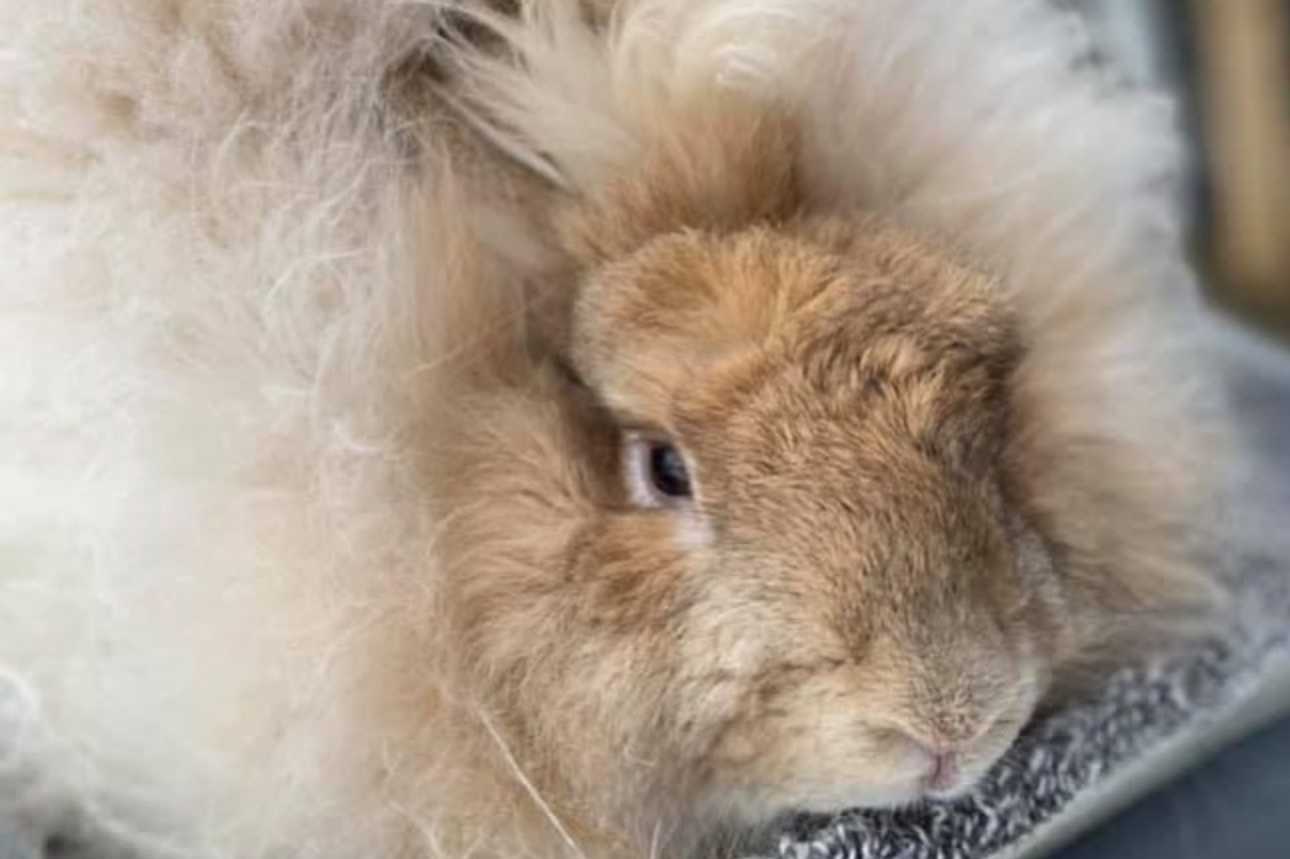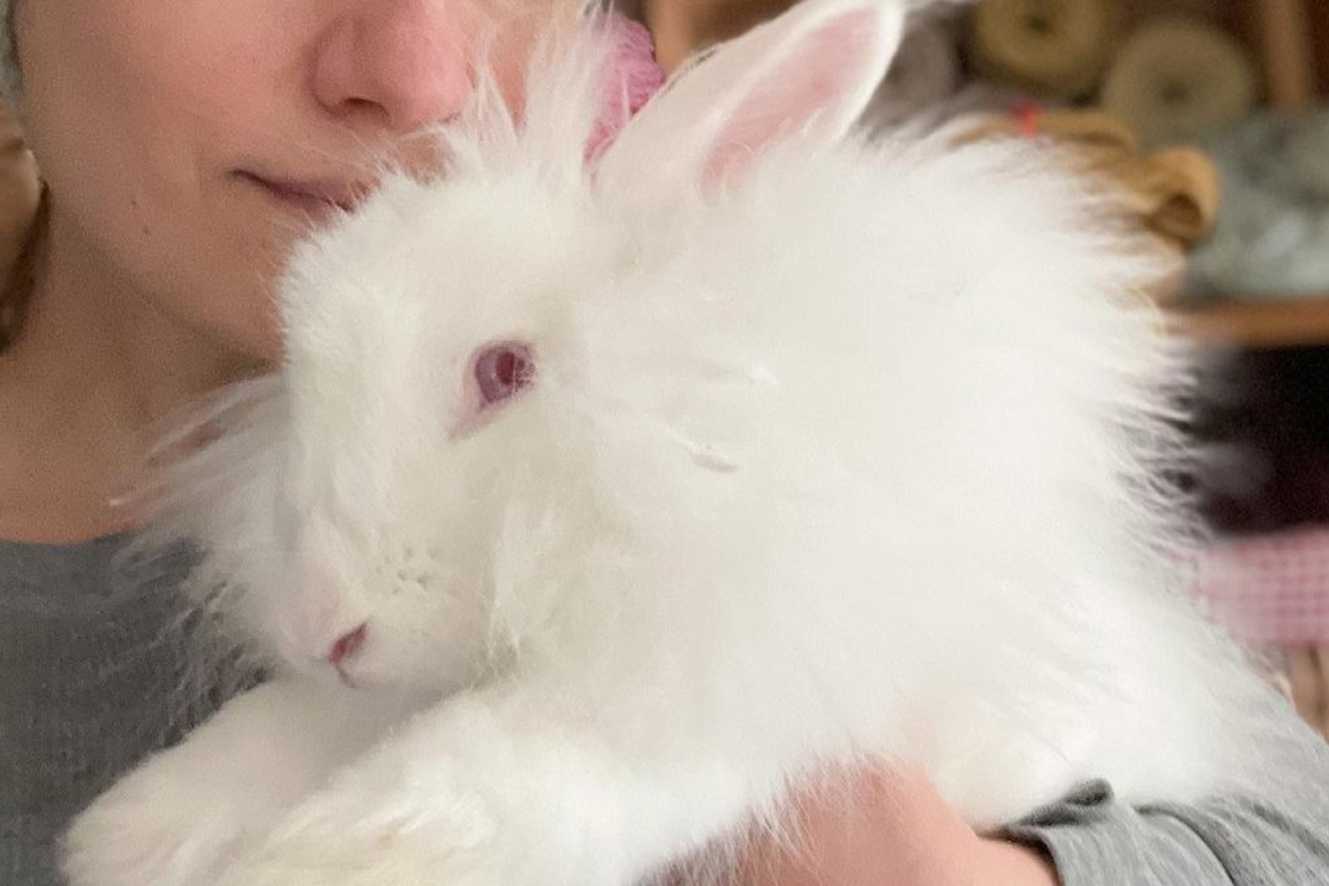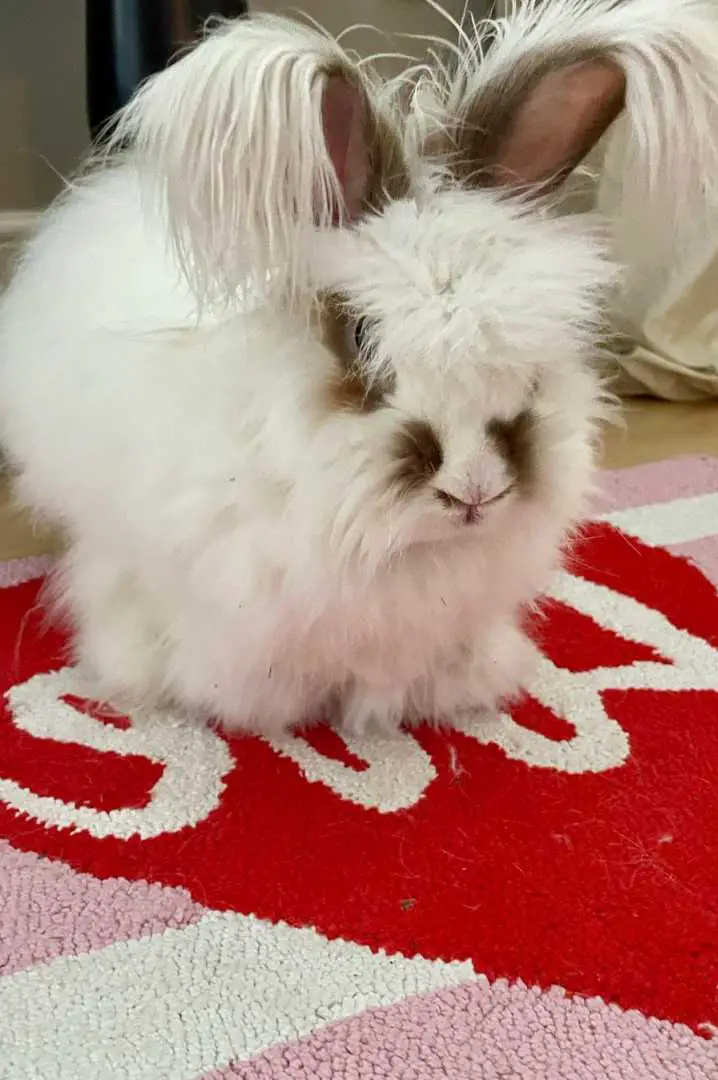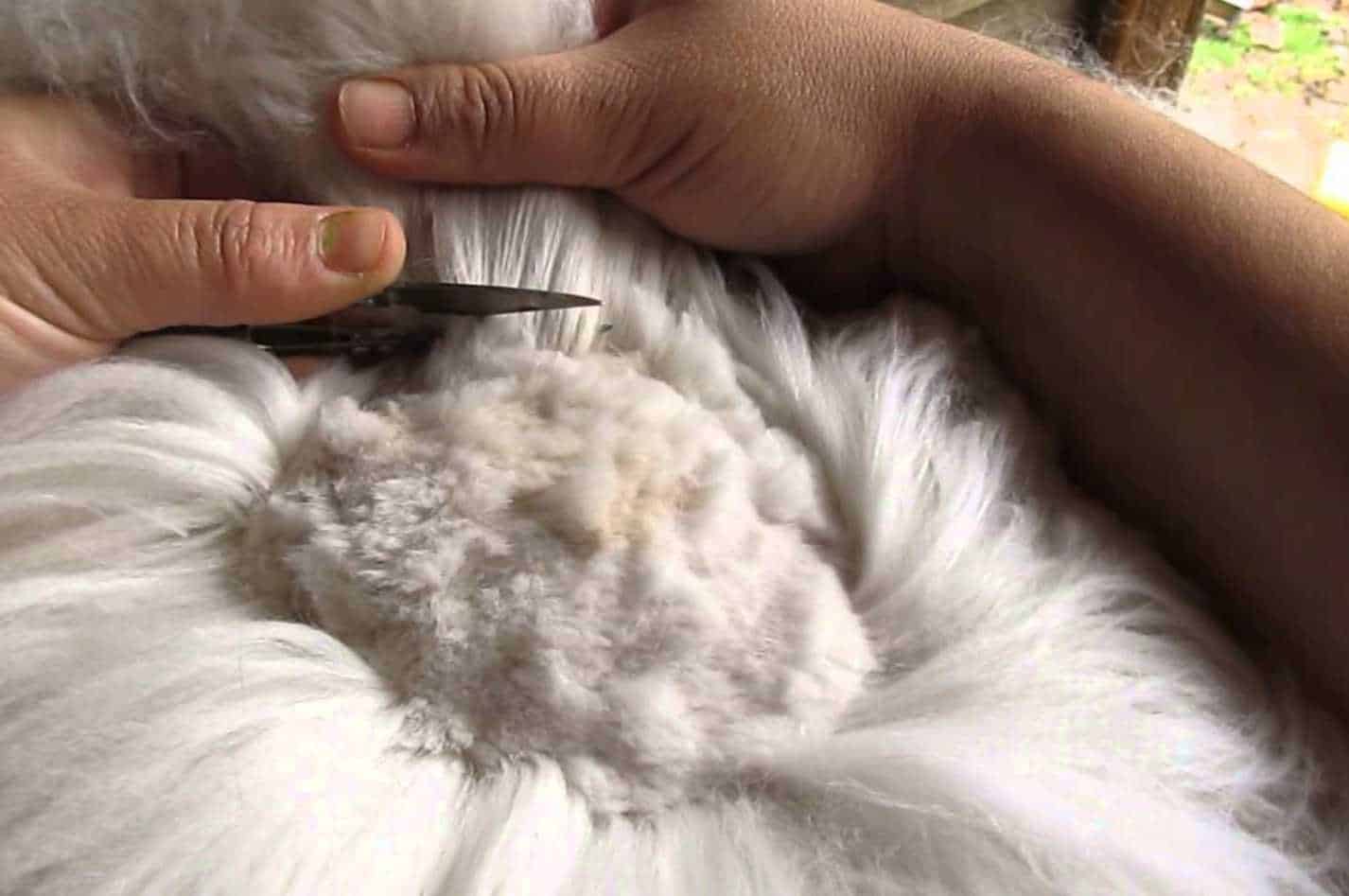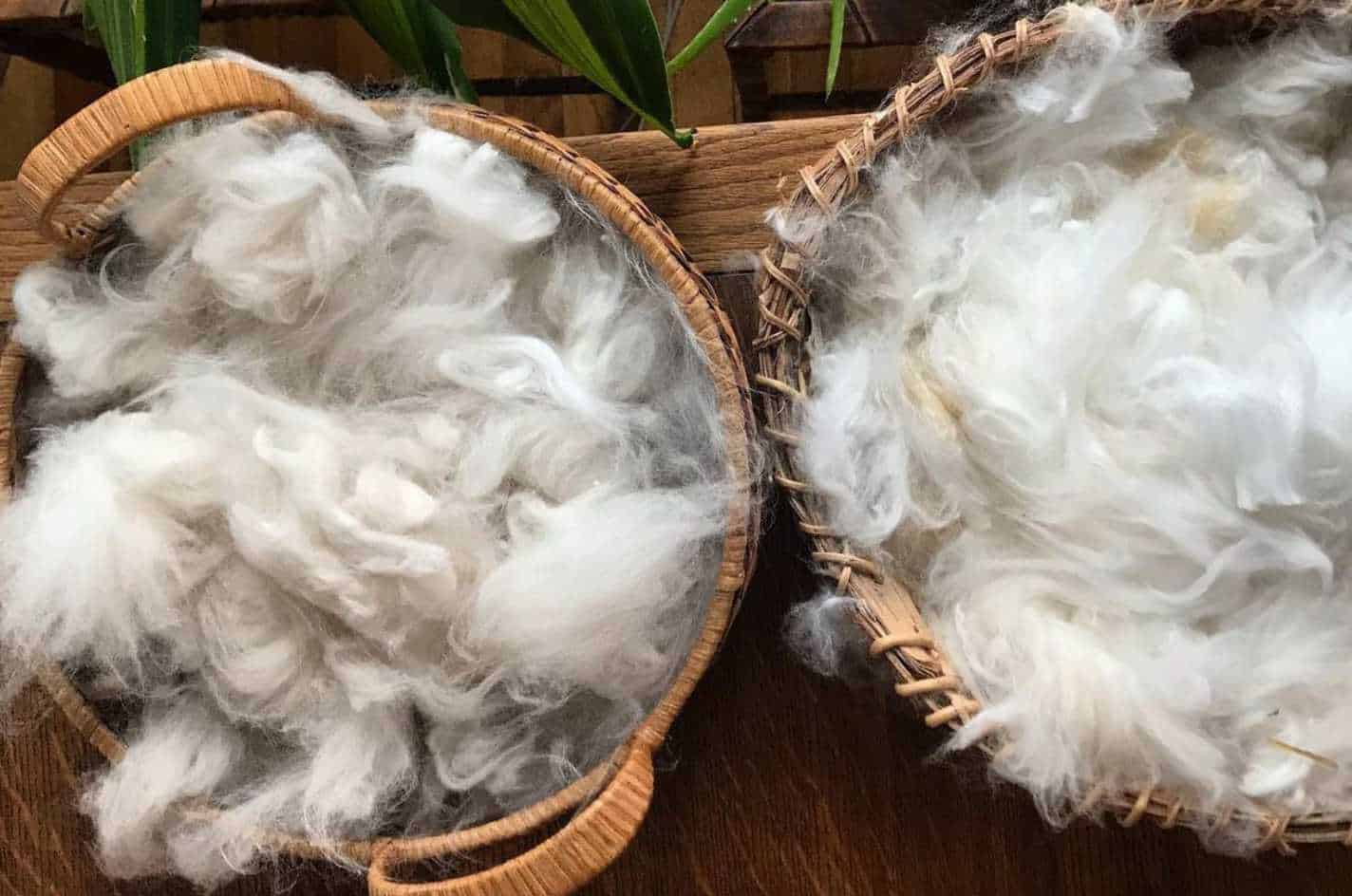Rabbits are fur pets of any age. They are lovable and fluffy, making them ideal house pets. But do you know that most Angora rabbits are raised for their wool? Here is the complete guide to raising angora rabbits for wool if you plan to raise one.
Angora Rabbit Short Breed Info Chart
| Breed Name | Angora Rabbit |
| Size | Medium to Giant |
| Weight | About 9.5 lbs. -12 lbs. |
| Lifespan | About 7-12 years |
| Temperament | Gentle, shy, sociable, laid-back, well-rounded. |
| Color | 9 varieties |
| Rarity | Common |
| Similar breeds | Checkered giants, Champagnes d’Argent, and English Silver |
| Best suited for | People of all ages including children and new pet owners. |
Why Most People Prefer the Angora Rabbits Wool?
Wool farmers and wool enthusiasts have said that the Angora rabbit’s wool is way better than the sheep’s wool.
Angora rabbits’ wool was almost around ten times warmer and softer than the sheep’s wool. These characteristics make the Angora rabbits’ wool the best wool to blend with any fabric.
Benefits of Raising Angora Rabbits for Wool
You will get several benefits from raising Angora rabbits for wool. One of these benefits is that your overhead cost is less, which means you can profit more for a single rabbit’s wool.
Here are some of the things you’ll get when choosing rabbit farming for their wools.
You don’t need to kill the rabbits.
This means that you do not need to keep buying rabbits to produce a ball of wool. You just need to comb, brush, or shred their coat.
You do not need an acre to raise rabbits.
Rabbits are low maintenance, and though they need to be active, they do not need a hectare of land to run around. You can just build a pen or a hutch with enough space for them to play and exercise.
Angora Rabbit Diet is inexpensive.
The Angora rabbits’ diet is composed mainly of hay, along with most rabbits. They do not need fancy meat stake as they are omnivores.
Angora rabbits reproduce fast.
Whether we will talk about the wool or them reproducing their kittens, Angora rabbits reproduce both of these. As to the latter, Angora rabbits can produce around 3 to 5 kittens per pregnancy.
What You Need to Consider When Raising Angora Rabbits for Wool?
Since rabbits are undoubtedly low maintenance, all you need to do to help the rabbits is ensure that they get the care they need. This includes the following:
- Dental care for
- Proper Grooming
- Proper Diet
- Rabbit Hutch Regular Cleaning
- Regular Visit to The Vet
Apart from what is listed above, here are the things that you might worry about when raising rabbits for wool.
Angora Rabbit: Health Issues
Here are the most common health issues in Angora rabbits. Prevent these health issues to ensure that your Angora rabbits produce quality wool.
Wool Mites and Flystrike
Because Angora Rabbits have long furs, they require maintenance to avoid certain diseases. Wool mites or flystrike are common on any breed when now appropriately groomed.
These are parasites that live in mattings that can cause flaky skins. You can use some powders and ointments.
Wool Block
Another common disease among all breeds is the wool block. If they ingest their sheddings too much, it may cause gastric or intestinal stasis. Rabbits have delicate digestive systems, and so if this organ is affected, it might cause impaction or even death.
To avoid encountering these problems, it is advised to pluck or hand sheer their fur every 3 to 4 months. Additionally, they get plenty of clean water, hay, and leafy greens.
Overgrown Teeth
Their teeth do not stop growing, so adding hay to their diet will help them maintain the length of their two front teeth. If this is not trimmed, it will cause abnormal eating patterns or pain from hitting their tongue and cheeks.
You may also bring the fur pets to the vet if it needs help with the alignment.
Angora Wool Best Sources
The Angora Rabbits had been over the globe and were bred in different places until there were five total Angora breeds.
ARBA classified four types:
- English
- French
- Satin
- German
5th breed, is not recognized by American Rabbit Breeders Association. According to ARBA, this breed lacks the characteristics of an Angora. Even though they are almost similar to the English Angora, their fur is different.
However, an association was made for this breed called the International Association of German Angora Rabbit Breeders or the IAGARB.
English Angora the Best Breed for Wool Spinning
The English Angora breed is the smallest among the four classified breeds by ARBA. They look like fur balls as their body, and entire faces are covered. Their coats are soft and silky but dense and need frequent grooming or at least twice a week, or else it will matt.
If you are looking for luxurious and soft wool, this is the best breed. They are compact and produce at least 10 ounces of fiber per year.
French Angora Produces the Best Wool
French breeds have no hair on their face. They have more guard hairs, where the color is primarily visible than undercoats. The fur is thick, smooth, silky, easy to take care of, and provides beautiful heft, texture, and warmth.
These rabbits molt, making it easy to harvest by plucking the fibers. However, due to the silkiness, it is not easy to spin. If you are still a novice or hand spinner, this breed will fit you.
Satin Angora and its Solid and Soft Wool
Satin Angora is a crossbreed of a Satin Rabbit and a French Angora. The coat is sheen, fine, and soft all over the body because of the mutation of different fibers from two rabbits, which produces solid and soft yarn, but is challenging to spin.
Like French Angora, this breed has hairless faces and feet.
Their coat is easy to maintain but produces the least wool. This breed is best for spinners who want a unique fiber or even a pet since it is not high maintenance.
Giant Angora, the Breed for Wool Enthusiasts
Giant Angora is the largest breed among all as it is a crossbreed of German Angora, Flemish giant, and French lops.
The size is twice the English Angora, thus producing twice the wool or around 1 to 2 lbs. per year. Their fur is dense and is only white. They do not shed, so hand sheering is a must.
Their face also has hair, but not as much as the English Angora. This breed is excellent for those really into spinning or selling wool. Of course, you will need a bigger space for them.
German Angora, the Best Source of Wool
German Angora is massive and produces the most wool among all the breeds, with two and a half to 4 and a half lbs. per year. It is mainly used for commercial operations.
The Giant Angora got the facial hair and the never shedding from this breed. Hand sheering is a must every 90 days.
The fur is dense but easy to maintain as it does not matt. Like Giant Angora, this breed is best for those serious with this line of work or hobby and have a space to keep them.
Why Angora Rabbits are the Best Sources of Wool
Although there are many varieties of Angora Rabbit, they all have some joint appearances. They are all known for their long furs that will always be present no matter what breed. It can be soft, dense, silky, or mixed textures.
The average weight of Angora Rabbits is 8 to 10 lbs. Giant Angora, even though they are big, also commonly weigh 10 pounds since the coat is what mostly makes them look humongous rather than their body.
Angora Rabbits come in 15 colors, including various shades and rare colors. These colors are blue, blue-cream, blue-gray, brown-grey, chinchilla, chocolate, cinnamon, cream, golden, marten sable, lilac, sable, smoke, sooty-fawn, and white. However, albino is the most common.
Most of the Giant Angora is albino, characterized by white fur and ruby eyes. Breeding with a different one is not advisable as it will lose the quality to maintain the colors.
How to Harvest Angora Wool
Depending on the Angora rabbit type, you can harvest their wool by plucking or shearing them. If you have a rabbit that molts like the English Angora, you can easily harvest their wool by gently plucking their wool while they are molting.
Regardless of the rabbit type, you must harvest their wool with care. You must not cause any pain to rabbits. Otherwise, you will be jailed for animal cruelty.
Here’s a video on how to harvest wool from an Angora rabbit.
How to Market Angora Rabbits Wool
Marketing Angora rabbit’s wool is easy. It is just like any other commodity in the market where you need to present it as a necessity.
You might encounter some people that will vouch for a sheep’s wool instead of the Angora rabbits’ but do not mind them. Sheep’s wool and Angora rabbits’ wool is two different kinds of wool which means they don’t have the same market.
You must find a market that best suits the Angora rabbits’ wool. People will start coming and looking for your product if you are in the right market.
Make sure that you build your product too, the Angora rabbits’ wool. Talk beautifully about the product but do not overdo it.
Do not forget to showcase the features and benefits of the Angora rabbits’ wool without hard-selling them to people.
You may also check this video for additional marketing strategies.
How to Sell Angora Rabbits Wool Quickly?
Raising Angora rabbits for wool production is very cost-effective. The rabbits are efficient in producing the wool as well.
But because of the competition, you might find it hard to sell the wools to people unless you create a process where there is a steady flow of buyers.
Look for groups, channels, or go to the local fair where you can showcase nonstop your rabbits’ wool to prospect buyers. However, when choosing a group or channel, ensure that your target market is people who love rabbit wools.
This way, it is easier for you to sell the product as they already have a background about rabbits’ wool. You can present your spun rabbits’ wool to these people whether they are dyed or not.
Summary
Angora rabbits are one of the ancient pets that you can have and have been in the wool industry for many centuries. We hope the complete guide to raising angora rabbits for wool helps you in your Angora rabbits raising journey.

